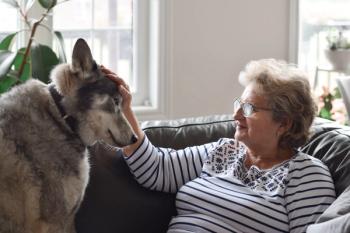
Financial management and budgeting: Parts 1 and 2 (Proceedings)
Just like a yearly pet's physical, your practice should have a look under the hood at least yearly.
Just like a yearly pet's physical, your practice should have a look under the hood at least yearly. Understanding the financial condition of your hospital enables you to make intelligent financial decisions, plan for capital expenditures (equipment purchases) and avoid cash flow issues that may arise through- out the course of the year. What should you check on to make sure the practice is running smoothly? The hospital's finances are broken down into five categories. Assets, liabilities, equity, income and expenses. Assets, liabilities and equity are reported on a balance sheet and income and expenses are reported on an income statement. Assets and liabilities are broken down into categories know as current assets and current liabilities. These are defined as having a life cycle of one year or less. Anything beyond one year is defined as another asset or long term liability.
Begin your check – up with the assets of the practice
CASH - How much is available on average at all times? Do you maintain an adequate cash balance? You can judge this by maintaining 30 days of obligations in the bank at all times. Thirty days of obligations will include vendor bills, credit card debt and payroll for a month. Smaller practices may average $30,000 to $35,000 while larger practices may average $80,000 to $100,000. Does your practice have too much cash on hand? Excess cash makes it an unproductive asset and consideration should be given to a distribution to owners for personal investment or additional retirement contributions. If you are always running out of cash, it is a good sign that the practice is suffering from profitability issues or too much cash is being drawn for the owners benefit and to the detriment of practice obligations. In these cases, cash flow projections or cash flow budgeting should be considered so a picture can be taken of what and when issues with bill payments will exist. Seasonal sales can also affect cash flow and should be planned for.
ACCOUNTS RECEIVABLE - How much are they and what's the percentage of gross revenue? An accounts receivable aging should be run each month. These can be printed from your veterinary software. This will tell you how much is owed by each client and how old their account balance is. Accounts receivable should not run more than 2.5% of gross revenue in a small animal practice and 11% in a large animal practice. Develop a good accounts receivable collection policy and keep activity up to date. Turn uncollected accounts over to a collection agency in a reasonable time period and follow through to small claims court or write them off. The IRS only recognizes bad debts if you report on an accrual basis of accounting and you have exhausted all means of collection. Otherwise you have a sales allowance.
INVENTORY - What are the inventory issues? The first is do you know how much you have? Many practices do not take a physical inventory count and have no idea how much drug and supplies they have on hand. 75% of practices do not use or only use limited portions of their veterinary software's inventory system. If you report on an accrual basis of accounting you must report the full inventory value of all drugs and supplies for tax purposes. If the inventory value or quantity on hand is an unknown, it is not possible to manage it effectively. Use the inventory module of your veterinary software completely. It is a significant tool in controlling quantity levels, reorder points and pricing. Take a complete physical inventory of what's on your shelf at least once a year. Adjust inventory counts within the veterinary software.
Inventory is an essential asset of the hospital offering full service care, but the cost to maintain it can be expensive. A hospital should turn its inventory completely over four to five times a year or once every 90 days. The formula to compute this is as follows:
Drug and supply costs = Inventory turns
Average Inventory
Example
All Pet Animal Hospital has $24,000 of inventory at the beginning of the year and $30,000 at the end of the year. During the year they have $130,000 of drug and supply purchases. Their inventory turns are 4.81 times or once every 76 days
$130,000 = 4.81 times
$27,000 (A)
(A) Average inventory on hand = 24,000 + 30,000 = 54,000 ÷ 2 = 27,000
Days inventory = 365 days ÷ 4.81 times or 76 days
Many hospitals carry similar drugs for treatment of the same symptoms or ailments usually because of doctor preference. When doctors do not agree on the same drugs it increases inventory costs. Every $100 of inefficient inventory adds $8.00 in carrying costs. When doctors can agree on common drugs and supplies, it reduces inventory costs and adds to the bottom line.
Don't carry to much inventory. If too much exists, send back the excess. Most vendors will take it back, but beware of the restocking charges.
EQUIPMENT EXPENDITURES-Most practices reinvest in new equipment each year. Plan on reinvesting 1% to 2% of your gross revenue yearly. Make equipment purchases that will not only further the medicine of your practice but also be economically viable by providing a return on your investment (ROI) at 20% to 25% of the equipment's cost yearly.
LIABILITIES-Now let's look at liabilities of the practice. How much are they? What type of debt does the practice have and what is its cost? One way to measure the financial performance of the hospital is to look at its Current Ratio. This is found by dividing current assets by current liabilities. Many lenders look at this as sign of financial strength for the practice. Current assets would be found by adding cash, accounts receivable, and inventory. Current liabilities can be found by adding accounts payable, credit card payable, payroll taxes payable, sales tax payable and current portion of long term debt. The industry average is 2 to 1 which means that for every $1 dollar of current liability there is $2 of current asset. Divide current assets by current liabilities to get the result.
Current ratio = Current assets / Current liabilities
Common questions you need to ask concerning liabilities:
- Do I pay all my bills in 30 to 45 days, except for deferred billing items?
- Do I pay all credit card balances in full each month? If not, what is the interest rate on the cards?
- What type of bank debt do I have? Is the interest rate floating (variable) or is the rate fixed?
- What type of leases do I have and when are they due?
- Should I be refinancing or consolidating any debt?
Another common measurement tool for determining practice financial strength is commonly referred to as determining the debt to equity ratio. The calculation for this is as follows:
Debt to equity ratio = Total debt / Practice equity
The more debt the practice has, the weaker it is in financial strength. The industry average is .3 to 1
EQUITY OF THE PRACTICE - How much is it? Most veterinary hospitals are service type businesses and do not build a significant amount of equity in the practice. Most veterinarians build their wealth outside of the practice individually.
Newsletter
From exam room tips to practice management insights, get trusted veterinary news delivered straight to your inbox—subscribe to dvm360.






